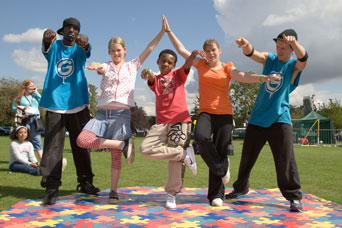3 How can we make partnerships work?

In this section we move to examining approaches that you might take to developing effective partnership working in your own practice.
As we have already indicated, working in partnership covers a wide range of professional practice and organisational arrangements – which means that there can be no single blueprint or definitive guide to ‘making partnerships work’. However, we believe there are a number of strategies that can help you to engage effectively with partners, whatever your situation.
Reflecting on your learning about leaders and leadership, we would suggest that it is important for leaders to be good boundary scanners (being aware of what is happening outside your immediate working environment) and good boundary spanners (using the information you acquire about that wider environment to take a proactive approach to leadership, so that you are less likely to be constantly having to respond to crises).
Similar considerations apply in thinking about leading in a partnership scenario, although, inevitably, life is more complicated. Sullivan and Skelcher (2002) have listed a range of skills and attributes of effective boundary spanners, based on their research into partnership working. We present a modified form of their listing in Box 7.1 below.
Box 1: The skills and attributes of boundary spanners
- Critical appreciation of the wider environment.
- Understanding different organisational contexts.
- Networking – including knowing who the ‘right’ people are, being able to access them and having ‘political’ skills.
- Recognising the appropriate leadership roles to play.
- Partnership working skills, including:
- communication skills (verbal and non-verbal)
- emotional literacy skills (being able to ‘read’ the emotional climate and respond appropriately)
- influencing skills
- conflict resolution skills
- negotiating skills
- problem-solving and creative/lateral thinking skills.
- (Adapted from Sullivan and Skelcher, 2002, pp. 101–2)
One way of equipping yourself to recognise and tackle the potential challenges to partnership working is to consider your partnership within its wider context.
The next section, on ‘Partnerships in context’, examines the first three items on Sullivan and Skelcher’s list.
We then go on to consider how you might establish effective co-working agreements with your partners. Underpinning your work in all of the above are the partnership working skills, which we will also examine in more detail.
